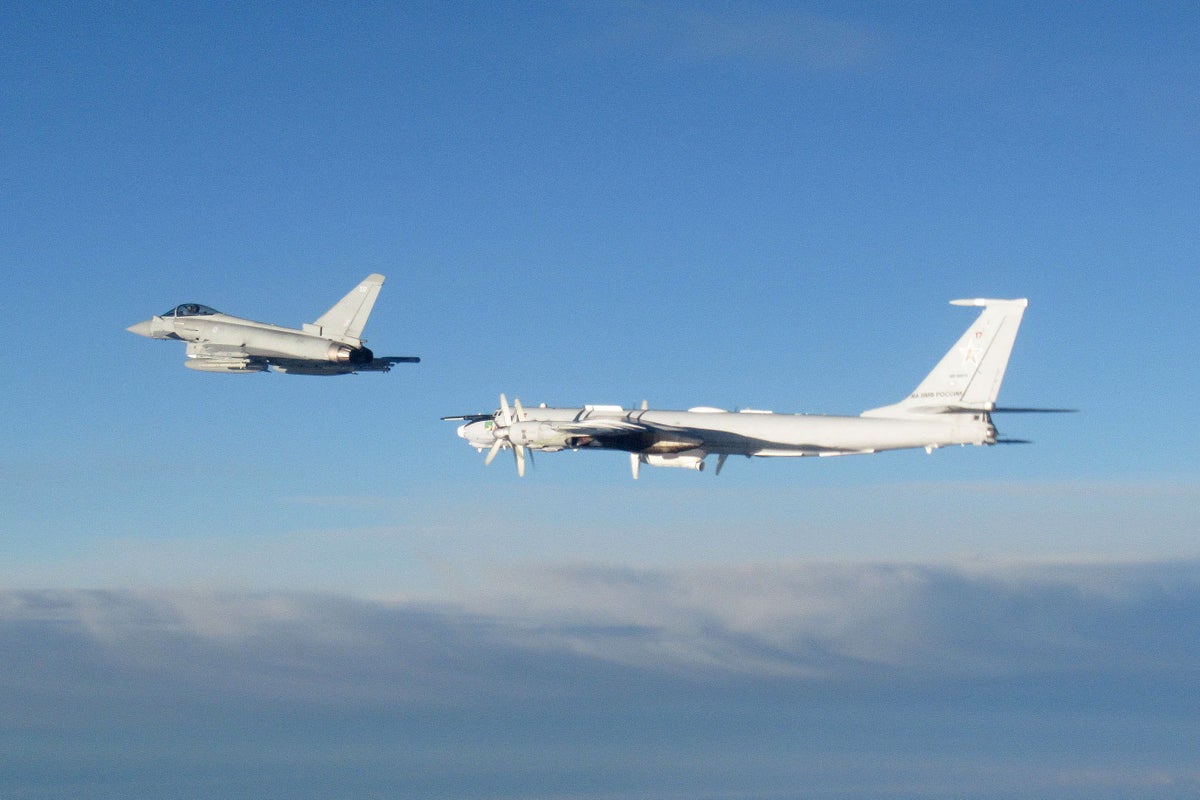For free real time breaking news alerts sent straight to your inbox sign up to our breaking news emails
Sign up to our free breaking news emails
The RAF has scrambled jets to intercept two Russian bombers travelling north of the Shetland Islands.
The Russian Tu-142 Bear-F and Tu-142 Bear-J maritime patrol aircraft, used for reconnaissance and anti-submarine warfare, were monitored by RAF Typhoons in international air space as they passed north of the UK.
Armed forces minister James Heappey said: “RAF crews at Lossiemouth maintain a constant watch over UK air space and are always ready to take action at a moment’s notice to keep our country safe.
“Pilots launched in their Typhoon jets to intercept two Russian long-range bombers this morning, monitoring them as they passed north of the Shetland Islands, ready to counter any potential threat to UK territory.”
A Voyager tanker was also scrambled and remained airborne for the duration of the mission to offer air-to-air refuelling, according to the Ministry of Defence.
Recommended
- Charity boss speaks out over ‘traumatic’ encounter with royal aide
- Ukraine war’s heaviest fight rages in east – follow live
The presence of the Voyager meant the Typhoons could remain in the air for the extended period necessary to complete their mission.
Fighter jets are constantly available at Lossiemouth, one of the RAF’s two quick reaction alert stations, to respond to threats in UK air space.
RAF pilots from Lossiemouth in Moray recently completed a four-month deployment to lead Nato’s air policing mission in Estonia, where more than 50 air intercepts of this kind were carried out.
The lead RAF Typhoon pilot in Monday’s intercept, whose name was not given by the MoD, said the “adrenaline kicked in” when the alarm call came “in the early hours of the morning”.
Russian military aircraft entering the UK Flight Information Region, the UK’s controlled zone of international air space, can pose a hazard to other aircraft, the MoD said.
An official from the ministry said such Russian aircraft often do not talk to air traffic control and refuse to “squawk” – a broadcast code used by pilots to ensure they are visible to other air users and air traffic controllers on the ground.
✕
Subscribe to Independent Premium to bookmark this article
Want to bookmark your favourite articles and stories to read or reference later? Start your Independent Premium subscription today.
SubscribeAlready subscribed? Log in
Popular videos
{{/link}}

